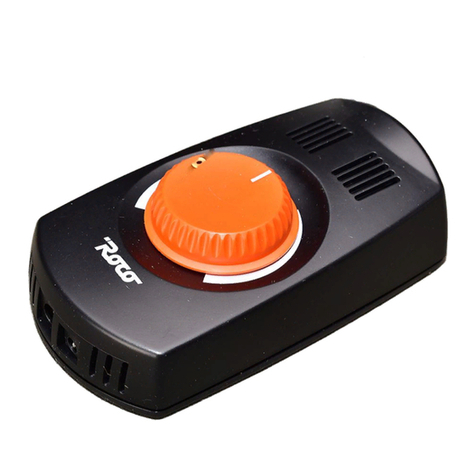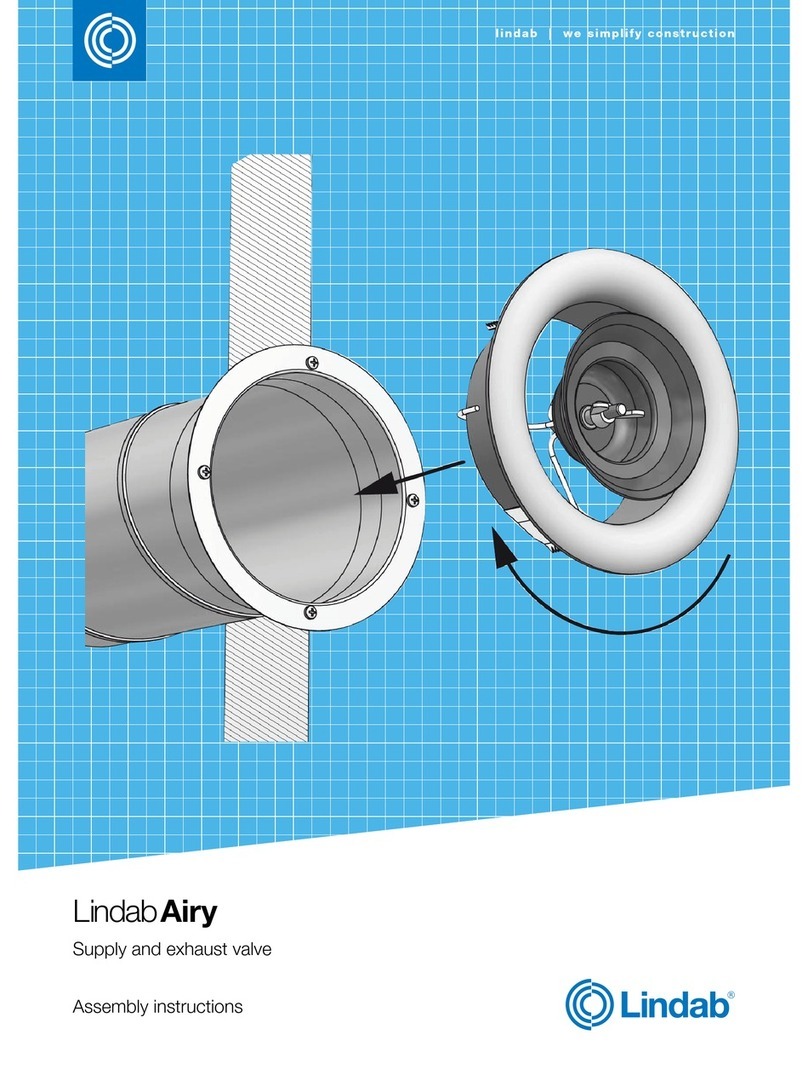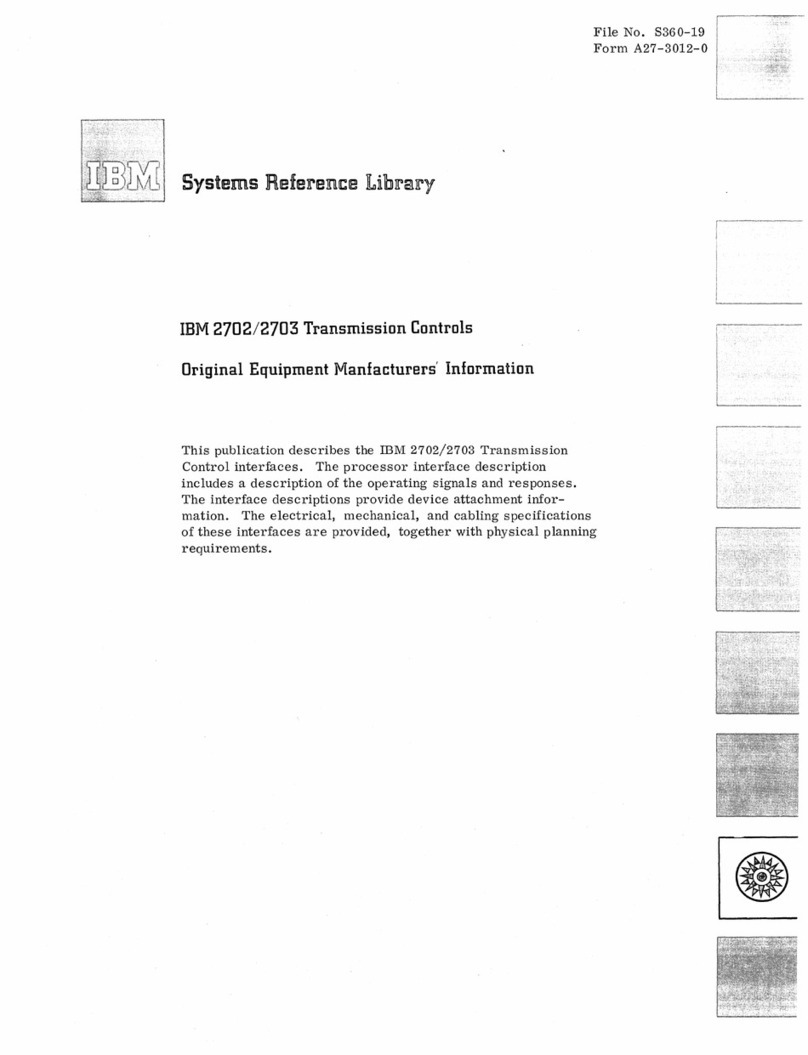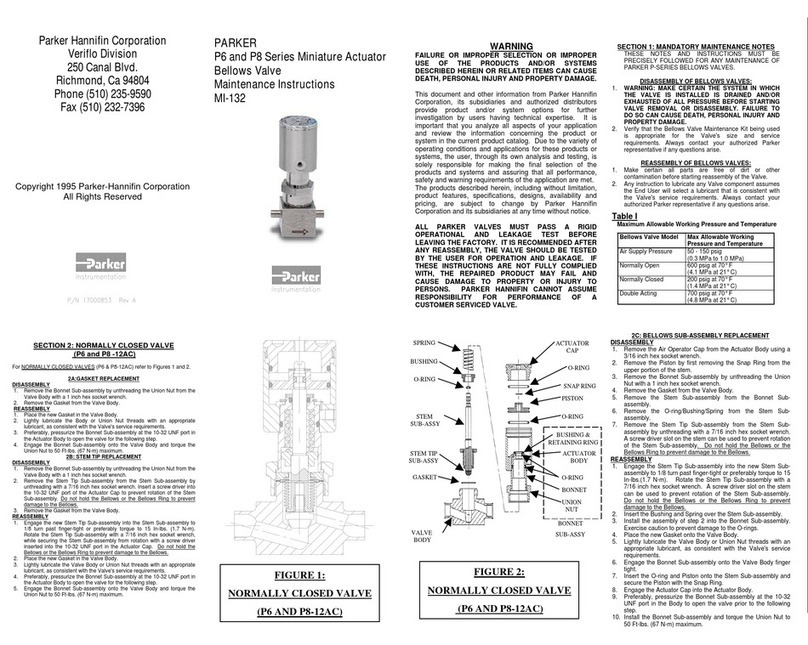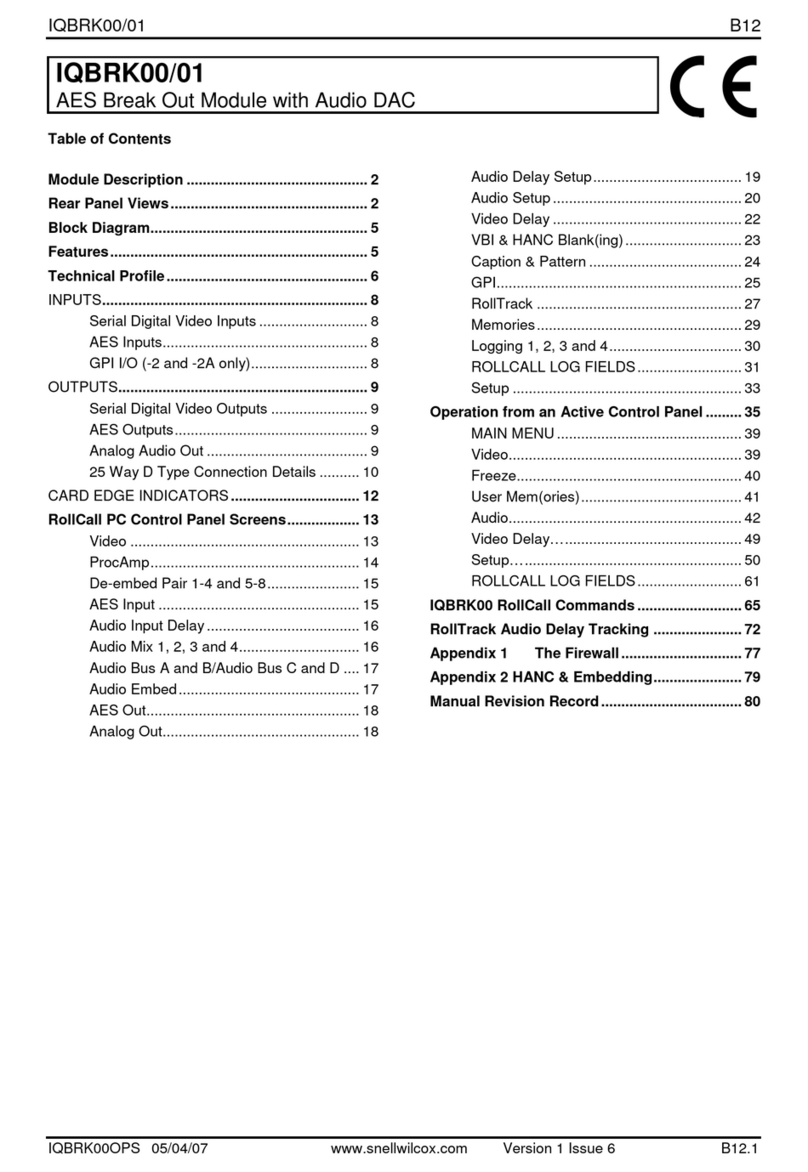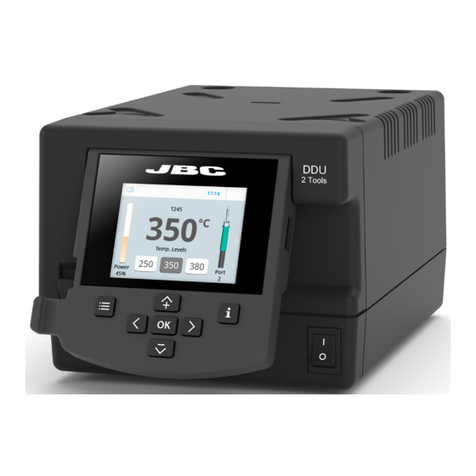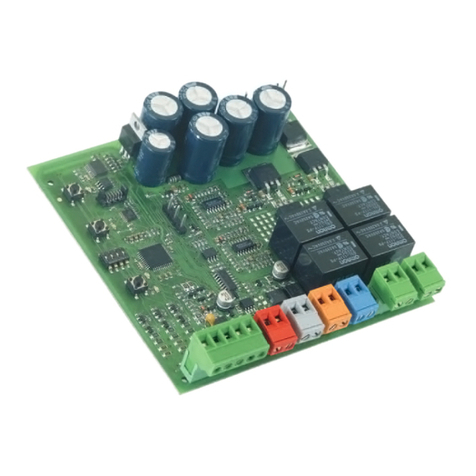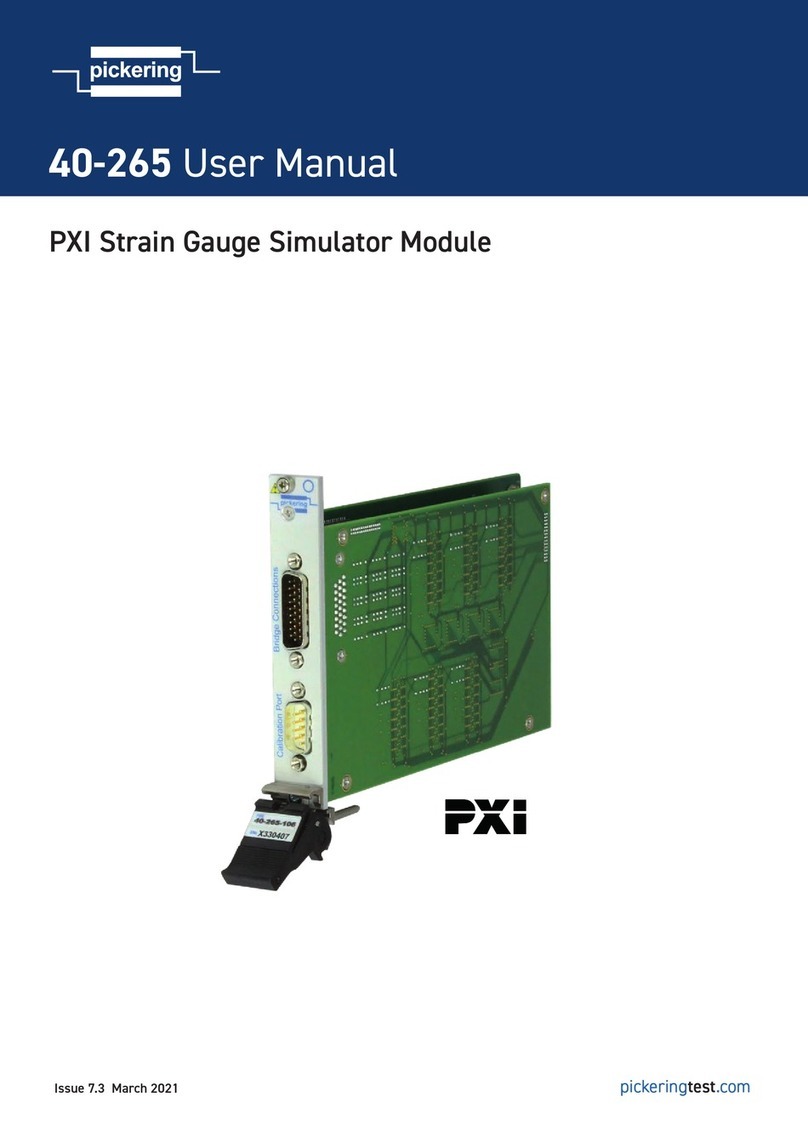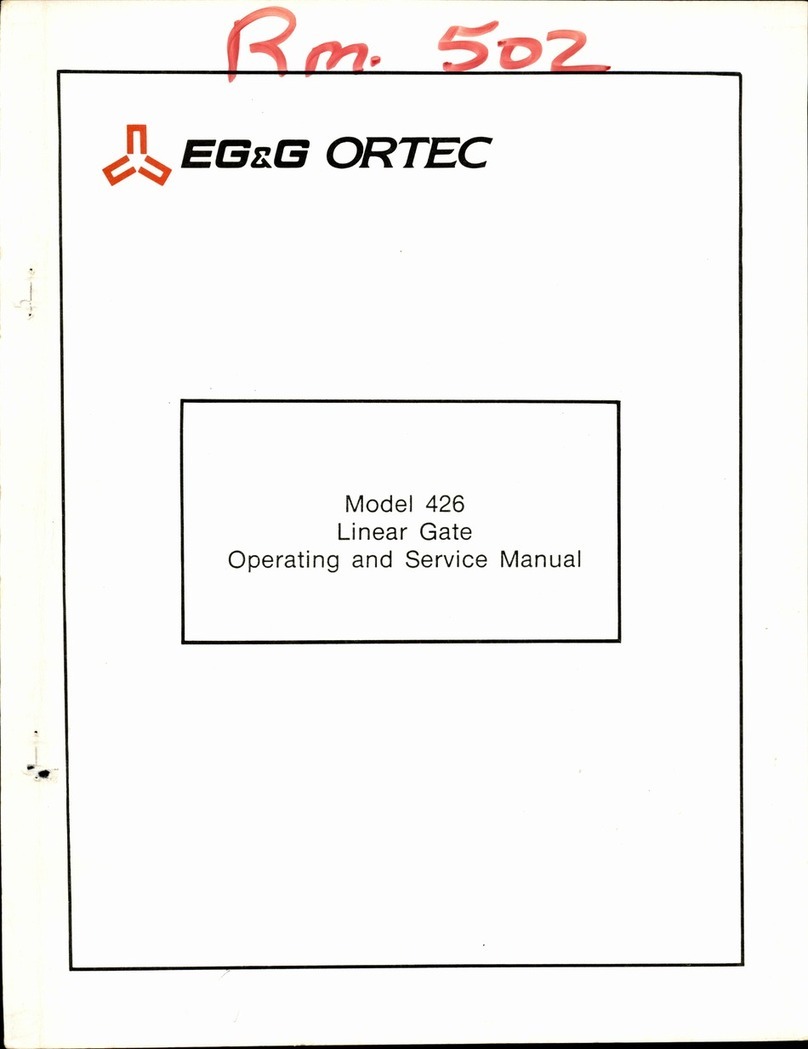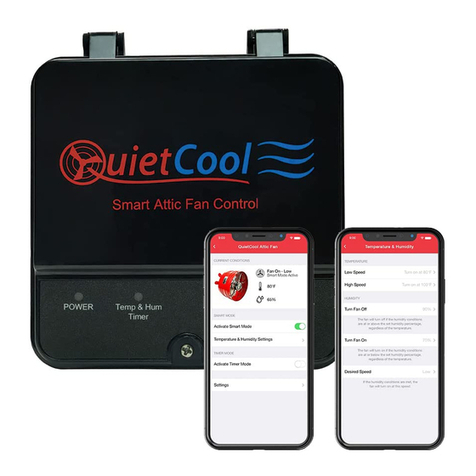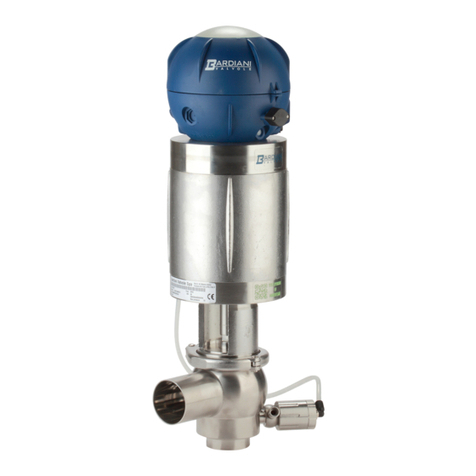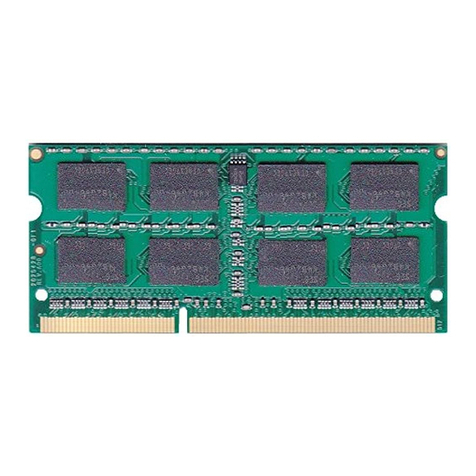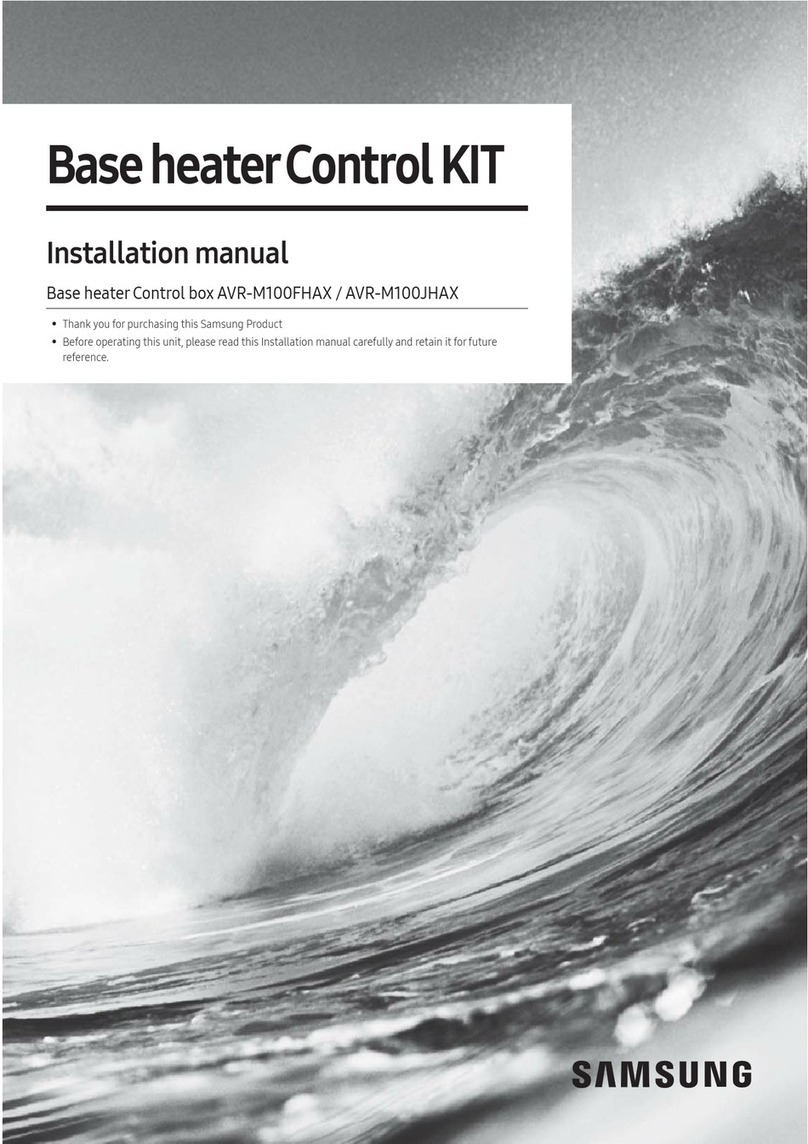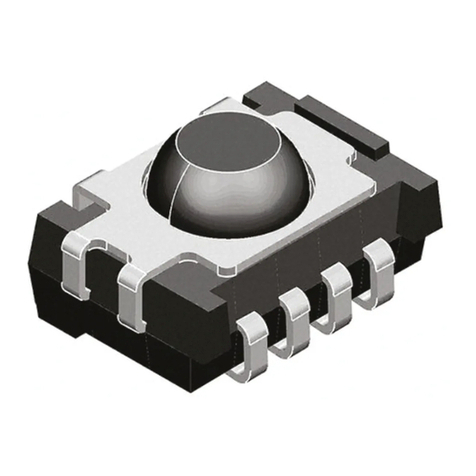roco 10777 User manual

10777
10779
DAS LICHTSIGNALMODUL 10777
DER BREMSGENERATOR 10779
LIGHT SIGNAL MODULE 10777
THE BRAKE GENERATOR 10779
MODULE DE COMMANDE DE SIGNALISATION RÉF. 10777
L
E GÉNÉRATEUR DE FREINAGE RÉF. 10779
Inhaltsverzeichnis
Table of Contents
Table des matières
D Lichtsignalmodul ................................................. 2 – 8
Bremsgenerator .................................................. 8 – 9
GB Light Signal Module ............................................ 10 – 15
Brake Generator .................................................. 15 – 16
F Module de commande de signalisation ............. 16 – 22
Le générateur de freinage .................................. 22 – 23
Notwendige Anlagenausstattung:
Necessary railroad systems:
– RocoNet Lokmaus®1 und 2-Systeme
– RocoNet Lokmaus®1 und 2 systems
oder / or / ou
– NMRA/DCC-kompatible Systeme
– NMRA/DCC compatible systems

2
3
LICHTSIGNALE AUF DER MODELLBAHN
Signale sind wichtige Ausstattungsdetails einer Modelleisenbahn. Für Spielbahner sind
sie willkommene und auffällige Ergänzung zu den Zügen. Sie schätzen besonders den
leuchtenden Effekt der Signale bei abgedunkelten Raum. Für Modellbahnprofis gehören
Signale unbedingt dazu, weil sie die Zugfahrten regeln und sichern. Signalpositionen
und –bilder werden von ihnen genau nach den Regeln des Vorbilds nachempfunden.
Das bedeutet bei mehrbegriffigen Signalen einen großen Verdrahtungsaufwand. Bis
zu vier Relais sind notwendig, um ein 4-begriffiges Ausfahrsignal vorbildgerecht zu
schalten:
Relais 1 – Umschaltung rot / grün bzw. Aktivieren des Bremskontakts
Relais 2 – bei grün: Zuschalten des gelben Lichts
Relais 3 – bei rot: Umschalten auf Rangierfahrt
Relais 4 – Umschalten Fahrstrom / Bremsgenerator.
Bei diesem Schaltaufwand überlegt man sich gut, ob dieser Aufwand an Verdrahtung
und damit auch an Material gerechtfertigt ist. Viele Modellbahner, die ihre Signale
eigentlich vorbildgerecht einsetzen wollen, verzichten wegen des hohen Aufwandes
dann doch darauf. Das Signalmodul 10777 von ROCO erledigt alle diese Aufgaben für
Sie – ohne viel Verdrahtung und für zwei Signale.
DAS ROCO LICHTSIGNALMODUL 10777
Das ROCO Lichtsignalmodul ist ein leistungsfähiger Empfängerbaustein für Lichtsignale
mit Glühbirnchen (16 Volt) oder Leuchtdioden (LED). Lichtsignale mit Leuchtdioden
müssen einen gemeinsamen Pluspol haben und für den Anschluß an einen Lichttrafo
(16 V) ausgelegt sein, wie z.B. die Signale von Viessmann und anderen Herstellern.
Das Signalmodul wird vom Weichen-Keyboard 10770 bzw. RouteControl 10772 über
Weichenadressen gestellt. Die Lokmaus®2 kann das Signalmodul (über Lokadressen)
nicht stellen.
Die Vorteile
þ das Signalmodul steuert mehrbegriffige Signale über einen Tastendruck
þ einfache Verdrahtung
þ Zugbeeinflussung integriert
þ Schaltlogik für den Anschluß eines Bremsgenerators ist integriert
þ vorbildentsprechend weiche Signalbildüberblendung
þ NMRA-DCC-kompatibel und daher auch in anderen kompatiblen Systemen ein-
setzbar (Lenz, Arnold etc...)
þ preisgünstig
DIE TECHNIK
Das Signalmodul erzeugt die verschiedenen Signalbilder für zwei Lichtsignale (ohne
eigenen Doppelspulenantrieb) durch interne Logik. Daher sind keine zusätzlichen
Relais und komplizierte Verdrahtungen erforderlich. Auch für die Zugbeeinflussung ist
das Relais schon eingebaut. Von den vier Stellungen des Signals geben drei – jetzt
auf deutsche Signale bezogen – Hp1, Hp2 und Sh1 die Fahrt frei. Hp00 aktiviert das
Anhalten vor dem Signal.
Mit dem Keyboard oder dem RouteControl können Sie die vier Signalbilder mit nur
jeweils einem Tastendruck abrufen. Um das Signalmodul kompatibel zu schon beste-
henden Digitalsteuerungen zu halten, werden die Signalbilder mit ‚normalen’ Digitalbe-

2
3
fehlen für Weichen und Signale erzeugt. Ein Signal muss deshalb zwei Adressen, das
gesamte Modul vier Adressen belegen. Bei einem Signalmodul, das auf die Adressen
5 bis 8 programmiert ist, belegt das erste Signal also die Adresse 5 und 6, das zeite
Signal die Adressen 7 und 8. Möchten Sie das erste Signal stellen, bedeutet das bei-
spielsweise:
– Adresse 5 rot: Hp00, Doppelrot, Fahr- und Rangierverbot
– Adresse 5 grün: Hp1, grün, Fahrt frei mit zulässiger Streckengeschwindigkeit
– Adresse 6 grün: Hp2, gelb-grün, Fahrt frei mit Geschwindigkeitsbegrenzung
– Adresse 6 rot: Vr1, rot und 2 x weiß, Rangierfahrten erlaubt.
Das Signalmodul reiht sich mit seinen vier belegten Adressen in die normale Adressen-
folge der Weichendecoder nahtlos ein.
Das Signalmodul ist NMRA-DCC-kompatibel. Dadurch kann das Signalmodul auch in
anderen NMRA-DCC-Systemen, z.B. von Lenz oder Arnold eingesetzt werden. Auch
hier belegt es natürlich für seine zwei Lichtsignale 4 Weichenadressen. Auch wenn Sie
nur ein zweibegriffiges Signal anschließen, belegt es zwei Adressen, weil die zusätzli-
chen Signalbilder trotzdem möglich wären.
DER ANSCHLUSS
Dem Signalmodul liegen die benötigten drei- und achtpoligen Flachstecker zum
Anschluß schon bei. So können Sie es an den Gleisausgang des Verstärkers oder eines
Boosters anschließen. An dem dreipoligen Flachstecker werden die beiden äußeren
Kontakte mit der Bezeichnung J und K benutzt. Die Polarität spielt dabei keine Rolle
(an Booster und Verstärker sind die Pole bei track out nicht bezeichnet). An diesen
Klemmen erhält das Modul Energie und Digital-Informationen.
An die achtpoligen Flachstecker werden die Signale angeschlossen. Je nach Vorbild-Sig-
naltyp unterscheidet sich die Zuordnung der Signalbirnchen zu den Anschlußfahnen.
Die Abbildungen 1 und 2 zeigen den Anschluß der verschiedenen deutschen Lichtsigna-
le. Um mit dem Signalmodul Signalbilder vieler verschiedener Bahnverwaltungen nach-
bilden zu können, sind bei einigen Signalen Kabelbrücken zwischen den Anschlüssen
der Signalbirnchen erforderlich.
der Signalbirnchen erforderlich.
der Signalbirnchen erforderlich.
der Signalbirnchen erforderlich.
Abbildung 1
Anschluß eines 4-begriffigen Ausfahrsignales (links) und eines 3-begriffigen Einfahrsignals (rechts).
Das Signalmodul 10777 steuert in diesem Beispiel bei beiden Signalen nur die Signalbilder.

4
5
Alle Signale werden mit dem gemeinsamen Pluspol an den Kontakt ‚+’ angeschlossen.
Die weiteren Anschlüsse richten sich nach dem Signaltyp und den gewünschten Signal-
bildern. Es werden nicht immer alle Anschlüsse benötigt. Gegebenenfalls sind Drahtbrü-
cken erforderlich, um auch die Signalbilder ausländischer Bahngesellschaften darstellen
zu können. Dazu dürfen Sie die Anschlüsse 1 – 6 beliebig miteinander verbinden.
Wollen Sie das Signalmodul nur zur Darstellung des Signalbildes benutzen, dann ist der
Anschluß damit vollständig.
Bei Signalen mit Glühbirnchen spielt die Polarität der Signalbirnchenanschlüsse keine
Rolle. Die gemeinsame Rückleitung wird auch bei diesen Signalen mit den Anschluß ‚+’
des Signalmoduls verbunden.
Die Ausgänge des Signalmoduls (auch die Ausgänge ‚+’ und ‚-’) sind gegen Überlastung
geschützt. Es schaltet die angeschlossenen Signale automatisch ab, wenn die Gesamt-
belastung 300mA überschreitet. Die Schaltfunktionen für die Zugbeeinflussung bleiben
aktiv, um auch bei Überlastung des Moduls Zusammenstöße zu vermeiden.
DAS SIGNALMODUL IST FÜR DEN AUTOMATISCHEN BETRIEB VORBEREITET
Das Signalmodul besitzt aber noch weitere Features. An den Schalteingängen
A – Signalstellung grün (und Bremskontakt C nicht aktiv)
B – Signalstellung rot (und Bremskontakt C aktiv)
C – Bremsgenerator ein (schaltet auf Stromversorgung durch Bremsgenerator um)
können Sie Schaltgleise, Schaltschwellen oder Reedkontakte anschließen, die die
Funktion des Signalmoduls automatisieren. Diese Kontakte können potentialfrei sein
(wie in den Skizzen dieser Anleitung), oder eines der beiden Gleispotentiale führen.
Die Anschlüsse der Schaltgleise führen folgende Funktionen aus:
Das Schaltgleis am Moduleingang B stellt das Signal wieder auf Rot, wenn ein Zug es
passiert hat. Das Schaltgleis am Moduleingang A stellt es wieder auf grün, nachdem der
Zug den folgenden Abschnitt verlassen hat, und das dritte Schaltgleis am Moduleingang
C aktiviert den Anhaltevorgang vor dem Signal, wenn es auf ‚Halt’ steht.
Das dritte Schaltgleis am Moduleingang C wird nur in Verbindung mit dem Bremsgene-
rator eingesetzt, oder wenn Wendezüge oder Mehrfachtraktionen auf der Anlage fahren.
Dadurch halten Züge immer an der gleichen Stelle an, unabhängig davon, ob die Lok
des Zuges vorne, hinten oder in der Mitte eingereiht ist, oder es sich um eine Mehrfach-
traktion – gegebenenfalls mit einer Mittel-Lokomotive – handelt.
Abbildung 2
Anschluß eines Zwerg-
Rangiersignals (links)
und eines Blocksignals
mit dem dazugehörigen
Vorsignal (rechts). Das
Signalmodul 10777
steuert auch in diesem
Beispiel nur die Signal-
bilder.

4
5
SCHALTUNGEN FÜR DEN SIGNALABSCHNITT
Prinzipiell kann man den Abschnitt vor dem Signal auf verschiedene Arten beschalten,
wenn das Signal eine automatische Zugbeeinflussung haben soll:
– Variante 1: traditionell durch Abschalten des Fahrstroms
– Variante 2: traditionell mit verlängertem Abschnitt auch für Wendezüge geeignet
– Variante 3: mit Bremsgenerator zum sanften Anhalten der Züge
Jede dieser Schaltungen, die weiter unten ausführlich beschrieben werden, hat ihre Vor-
und Nachteile. Der zur Verfügung stehende Platz ist sicher ein wesentliches Argument
für oder gegen die Lösung mit dem Bremsgenerator. Die schönste und vorbildgerech-
teste Lösung erfordert auch den meisten Platz – eben vorbildentsprechend.
Variante 1 Traditionell mit kurzem Isolierabschnitt ohne Schaltgleise
Vor dem ‚Halt’ zeigenden Signal wird der Fahrstrom im Halteabschnitt abgeschaltet.
Züge, die in den Halteabschnitt einfahren, halten mit ihrem mechanischen Auslauf
(durch die Schwungmassen) an. Das Spitzenlicht erlischt und bei den Wagen, die
mit im Signalabschnitt stehen, geht die Innenbeleuchtung aus. Der isolierte
Abschnitt vor dem Signal muß nur so lang sein, daß die Lokomotive darin Platz fin-
det und der mechanische Auslauf die Lok nicht über die zweite Isolierung hinaus-
fahren läßt.
Ein Problem für diese Schaltung stellen durchverdrahtete Züge und Wagen mit
Achtpunkt-Stromaufnahme dar, weil sie die Isolierung des Abschnittes überbrücken.
Der Zug kommt eventuell gar nicht zum Stehen. Wendezüge mit schiebender Lok hal-
ten erst zu spät an, weil die Wagen das Signal schon passiert haben, bevor die Lok in
den Halteabschnitt einfährt.
Bei der Verdrahtung ist die Brücke zwischen den Kontakten (siehe Zeichnung) erfor-
derlich, da der Abschnitt sonst nicht stromlos wird!
Wichtig: Wenn Sie bei dieser Schaltung den Bremsgenerator integrieren möch-
ten, müssen Sie den Signalabschnitt zur Version 3 (mit Bremsgenerator, langem
Isolierabschnitt (Zuglänge + Bremsweg) und drittem Schaltgleis) umrüsten!
Abbildung 3
Anschluß eines 4-begriffigen
Ausfahrsignals mit Zugbeeinflus-
sung durch das Abschalten des
Fahrstroms (Variante 1) im Sig-
nalabschnitt.
Die Brücke von ‚+’ nach ‚C’
ersetzt das Schaltgleis, das sonst
den Bremsvorgang auslöst.
Achtung: Zeichnung nicht
maßstäblich!

6
7
Variante 2 Konventionell mit langem Isolierabschnitt (Zuglänge + Brems-
weg) und drittem Schaltgleis
Vor dem ‚Halt’ zeigenden Signal wird der Fahrstrom im Halteabschnitt dann erst
abgeschaltet, wenn die erste Achse des Zuges am Schaltgleis C angekommen
ist. Züge, die in den Halteabschnitt einfahren, halten an dem Schaltgleis mit ihrem
mechanischen Auslauf an. Das Spitzenlicht erlischt und bei allen Wagen geht die
Innenbeleuchtung aus. Durchverdrahtete Züge und Wagen mit Achtpunkt-Strom-
aufnahme stellen jetzt kein Problem mehr dar, weil sie die Isolierung des Abschnit-
tes nicht mehr überbrücken können. Der Zug kommt zuverlässig zum Stehen. Auch
Wendezüge halten in der richtigen Position an, weil immer die erste Achse – auch
die des Steuerwagens – den Haltevorgang auslöst.
Variante 3 Mit Bremsgenerator, langem Isolierabschnitt (Zuglänge +
Bremsweg) und drittem Schaltgleis
Diese Variante unterscheidet sich von Variante 2 nur durch den zusätzlichen Anschluss
des Bremsgenerators. Vor dem ‚Halt’ zeigenden Signal wird der Fahrstrom deshalb im
Halteabschnitt nicht ab- sondern umgeschaltet, wenn die erste Achse des Zuges am
Schaltgleis angekommen ist. Dann versorgt nicht mehr der Verstärker den Abschnitt
mit Fahrstrom, sondern der Bremsgenerator. Züge, die in den Halteabschnitt ein-
fahren, halten ab dem Schaltgleis mit ihrer programmierten Bremsverzögerung an.
Das Spitzenlicht der Lok behält seinen Status bei, d.h. war es an, bleibt es an – war
es aus, bleibt es aus. Bei allen Wagen bleibt die Innenbeleuchtung eingeschaltet.
Durchverdrahtete Züge und Wagen mit Achtpunkt-Stromaufnahme stellen hier kein
Problem dar, weil sie die Isolierung des Abschnittes nicht überbrücken können. Der
Zug kommt zuverlässig zum Stehen (programmierten Anhalteweg der Anlagengrö-
ße anpassen!). Auch Wendezüge und Mehrfachtraktionen halten in der richtigen
Position an, weil immer die erste Achse – auch die eines Steuerwagens – den
Haltevorgang auslöst.
Abbildung 4
Anschluß eines 4-begriffigen
Ausfahrsignals mit Zugbeein-
flussung durch das Abschal-
ten des Fahrstromes (Variante
2) im Signalabschnitt. Der
Haltevorgang wird durch das
Schaltgleis C ausgelöst.
Achtung: Zeichnung nicht
maßstäblich!

6
7
SIGNALABSCHNITTE IM COMPUTERBETRIEB
Steuern Sie Ihre Anlage mit dem Computer über das ROCO InterComm 10785 und die
Rückmelder 10787, dann kann sich die Funktion des Signalmoduls auf die Darstellung
der Signalbilder beschränken. Bei einem langsamen Computer stellt die Zugbeeinflus-
sung des Signalmoduls sicher, daß kein Signal überfahren wird.
Trotzdem macht das Signalmodul hier Sinn, denn bei mehrbegriffigen Signalen spart
das Signalmodul immer noch mehrere Relais. Die Software des InterComm unterstützt
das direkte Anwählen der Signalbegriffe durch entsprechende Symbole auf dem Bild-
schirm-Stellpult bzw. Gleisbild.
Das vorbildgerechte Anhalten der Züge erledigt bei einem schnellen PC die Compu-
tersoftware. Sie erfährt über die Rückmeldung, wann der Zug an der Position ange-
kommen ist, an der der Bremsvorgang ausgelöst werden muß. Sie sendet dann die
entsprechenden Fahrbefehle an den Zug.
PROGRAMMIERUNG DES SIGNALMODULS
Vor dem ersten Einsatz auf Ihrer Modelleisenbahn muß das Signalmodul programmiert
werden, damit es ‚weiß’, auf welche Adressen es reagieren soll. Dazu schließen Sie
das Modul an den Gleisausgang (track out) des Verstärkers an. Sie wählen auf dem
Keyboard oder dem RouteControl eine der vier Adressen, auf die das Signalmodul rea-
gieren soll. Sie drücken den Programmiertaster am Modul und halten ihn gedrückt. Jetzt
geben Sie auf dem Keyboard / RouteControl einen Schaltbefehl, indem Sie die Taste bei
der grünen LED drücken. Das Signalmodul erkennt den Schaltbefehl und übernimmt die
Adresse als seine eigene. Dies zeigt das Modul dadurch an, das es nacheinander die
Lichter eines angeschlossenen Signals zuerst einzeln kurz aufleuchten läßt und dann
alle Lichter nacheinander einschaltet. Damit ist der Programmiervorgang abgeschlos-
sen und Sie können die Taste wieder loslassen. Tritt bei der Programmierung ein Fehler
auf, blinken am Ende beide Signale abwechselnd mit allen Lichtern.
Abbildung 5
Anschluß eines 4-begriffigen
Lichtsignals an das Signal-
modul 10777 mit Automatik und
Bremsgenerator (Variante 3)
Achtung: Schaltbild nicht
maßstäblich

8
9
WICHTIG: Das Signalmodul kann nur auf vier direkt aufeinanderfolgende Adressen ein-
gestellt werden. Die Adreßgruppen beginnen mit 01, 05, 09, 13, 17 ...etc. Sie fügen sich
damit nahtlos in die Vierer- bzw. Achtergruppen der Weichendecoder ein.
DER ROCO BREMSGENERATOR 10779
Vorbildgerechtes Abbremsen und Anhalten vor einem Signal, das auf ‚Halt’ steht, ist im
Digitalen Modellbahnbetrieb jetzt möglich – auch ohne Computer. Der ROCO Bremsge-
nerator 10779 realisiert diese Funktion meisterlich.
Er erhält vom Verstärker oder Booster alle Informationen, die über das Gleis an die
Lokomotiven gesendet werden. Diese Informationen verändert er so, daß bei den
Lokbefehlen die Fahrstufe auf Stillstand gesetzt wird. Die anderen Bestandteile des
Lokbefehls werden unverändert beibehalten. Die so veränderten Informationen werden
im eingebauten Verstärker mit dem erforderlichen Strom (2.500 mA) gekoppelt und am
Gleisausgang des Bremsgenerators ausgegeben.
Bei den Lokomotiven, die das Licht eingeschaltet haben, bleibt es eingeschaltet, bei den
anderen ausgeschaltet – individuell angepaßt an jede Lok. Bei einer Lok, die vor einem
Signal wartet, können Sie sogar mit der Fahrtrichtung das Licht umschalten oder bei
einer Soundlok einen Pfiff auslösen, der den Fahrdienstleiter um Einfahrt bittet!
Durch diese Auslegung des Bremsgenerators ist er vergleichbaren Geräten überlegen,
die nur einen allgemeinen Befehl, einen so genannten ‚general call’ übertragen, der
auch alle Loks anhält, die Fahrtrichtung aber generell auf rückwärts setzt und das Licht
immer ausschaltet.
Unbedingt beachten: In den Signalabschnitten, die der Bremsgenerator versorgt,
werden wegen der Veränderung der Fahrbefehle für die Loks andere Daten übertragen
als in den übrigen Abschnitten. Eine leitende Verbindung dieser Abschnitte mit unter-
schiedlichen Daten hätte einen Kurzschluß zur Folge, der einen Verstärker oder Booster
zerstören könnte! Deshalb müssen Sie beim Einbau des Bremsgenerators sorgfältig
auf eine strikte Isolierung der Signalabschnitte gegenüber dem Rest der Anlage achten.
Dazu isolieren Sie den Signalabschnitt an beiden Enden beidseitig mit Isolierschienen-
verbindern! Es dürfen durch die Schaltung der Signalabschnitte, z.B. über ein Relais,
nie beide Stromquellen gleichzeitig anliegen oder miteinander verbunden werden!
Das Roco Signalmodul 10777 hat hier große Vorteile, weil es die erforderliche Sicherheit
eingebaut hat. Nur für die Isolierung des Signalabschnittes müssen Sie selbst sorgen.
WIE FUNKTIONIERT DER BREMSGENERATOR IM ANLAGENBETRIEB?
Verfolgen wir den Betrieb in einem Blockabschnitt (siehe Abbildung 5 oben). Ein Zug ist
im Bahnhof und bekommt Ausfahrt auf die Strecke. Das Blocksignal unseres Abschnit-
tes steht auf ‚Fahrt’ und der Zug passiert es ohne anzuhalten und fährt weiter auf der
Strecke. Hinter ihm wird das Signal geschlossen und zeigt das Signalbild ‚Halt’, weil
der Zug den Kontakt ‚B’ überfahren und damit ausgelöst hat. Das Signalmodul stellt
das andere Signalbild auf dem Signalschirm dar und schaltet zusätzlich den Kontakt ‚C’
Abbildung 6
Der ROCO Bremsgenerator 10779

8
9
scharf. Der Signalabschnitt vor dem roten Signal bleibt aber weiterhin mit dem Fahr-
strom aus dem Verstärker verbunden.
Der nächste Zug, der jetzt in den Blockabschnitt einfahrt, fährt ungestört vor, bis er den
Kontakt ‚C’ erreicht. Der muß so weit im Blockabschnitt plaziert sein, daß der gesamte
Zug schon die Trennstelle passiert hat. Über den Kontakt ‚C’ wird das Signalmodul jetzt
dazu gebracht, den Blockabschnitt auf den Bremsgenerator umzuschalten. Dadurch
erhält die Lok den Befehl auf Stillstand abzubremsen. Das macht sie mit der einpro-
grammierten Bremsverzögerung. Natürlich bleibt dabei ihr Spitzenlicht eingeschaltet
und auch die Innenbeleuchtung der Wagen leuchtet weiter.
Weil der Lokführer etwas ungeduldig ist, drücken Sie die Taste ‚F3’ an der Lokmaus und
die Lok läßt ihren charakteristischen Pfeifton hören.
Endlich springt das Signal auf ‚Fahrt frei’. Das Signalmodul stellt dafür das neue Sig-
nalbild auf dem Signalschirm dar und stellt die Stromversorgung des Signalabschnittes
wieder auf den Verstärker zurück. Die Lok erhält einen Fahrbefehl, dessen Fahrstufe
größer als null ist und beschleunigt mit der eingestellten Beschleunigungsstufe auf ihre
Fahrgeschwindigkeit.
Wenn zum Schalten des Signalmoduls unsere Kontaktgleise 42518 oder die Schalt-
schwelle 42605 eingesetzt werden, spielt es keine Rolle, wo sich im Zugverband die Lok
befindet. Selbst ein Wendezug, der den Abschnitt abwechselnd mit Lok vorne und Lok
hinten befährt, wird immer an der richtigen Stelle anhalten, da jeweils die erste Achse
den Anhaltevorgang auslöst. Auch ein Mehrfachtraktion braucht hier keine spezielle
Schaltung mehr!
Abbildung 7
Anschluß des Bremsgene-
rators an das Lokmaus
®2
Digitalsystem
Abbildung 7
Anschluß des Bremsgene-
rators an das Lokmaus
Digitalsystem

10
11
THE ROCO LIGHT SIGNAL MODULE 10777
The ROCO light signal module is a strong receiver unit for light signals using either miniature
bulbs (16 volts) or light diodes (LED). Signals using LEDs must have a common positive
input and be designed for using a 16 Volt power supply transformer as for instance the light
signals made by Viessmann and other manufactures. The signal module is controlled from the
Turnout Keyboard 10770 or the RouteControl 10772 (USA: 10872) via turnout addresses. The
Lokmaus®2/Power mouse™ cannot control the Signal Module (via Loc addresses).
The advantages
þ the signal module controls multiple aspect signals with one key activation
þ integrated train control
þ smooth cross-fade between the signal aspects
þ simple wiring
þ control logic for addition of a brake activator is included
þ attractive price
þ NMRA/DCC compatible, therefore can also be used with other compatible systems
(Lenz, Arnold, etc.)
THE TECHNOLOGY
The signal module generates the different signal aspects for two light signals (without their
own twin-coil mechanism) through its internal logic. Therefore no additional relays or compli-
cated wiring are required. The relay necessary for train control is built in as well. Based on the
four possible aspects of the signal – three of them (referring to German railways) Hp1, Hp2
and Sh1 – will indicate clear track. Hp00 activates the stopping for the signal.
With the Turnout Keyboard10770 or the RouteControl 10772/10872 you can call up the four
aspects with a single key command. To keep the signal module compatible with already exist-
ing digital controls the signal aspects are called up with ‘normal‘ digital commands for turnouts
and signals. Therefore a signal must be controlled by two addresses and the entire module
four addresses. A signal module which is programmed for addresses 5 through 8, the rst
signal responds to address 5 and 6 and the second to addresses 7 and 8.
If you want to set the rst signal this means:
– address 5 red: Hp 00, aspect double red, no passing or switching (shunting);
– address 5 green: Hp 1, aspect green, passing with allowed route speed;
– address 6 green: Hp 2, aspect yellow-green, passing with speed limitation
– address 6 red: Vr 1, aspect red and 2x white, switching (shunting) permitted.
The signal module ts perfectly with its four addresses into the normal address sequence of
the turnout decoder.
The signal module is NMRA/DCC compatible; therefore it can be used with other NMRA/DCC
systems such as Lenz or Arnold. In this application too it will occupy four turnout addresses
for its two light signals. This also applies even if only a two-aspect signal is used, it requires two
addresses because the additional signal aspects could be generated.
THE CONNECTION
The signal module is supplied with the necessary three- and eight-pole at connectors. It can
be connected to the track output of an amplier or booster. At the three-pin at connector
the two outer contacts marked “J” and “K” are used. The polarity is not relevant (the polarity
is not indicated at “track out” on either booster or amplier). The module receives its power
and digital information from these terminals. The signals are connected to the eight-pin at
connectors. Depending on the prototype signal the miniature bulbs are connected to the ter-
minals. Illustration 1 and 2 show the connections of different German signals. Cable connec-
tions between signal bulbs have been provided at some signals to be able to reproduce signal
aspects of many different railway companies.

10
11
All signals are connected with their positive polarity to the contact “+”. Further connections
depend on the type of signal and required signal aspects. Not all terminals are required at all
times. Sometimes wire connections are necessary to reproduce the aspects of foreign rail-
ways. Therefore you can interlink the outputs 1 to 6 arbitrarily.
If the module is used only to present the signal lights the connection is completed.
If the signal uses light bulbs the polarity of the bulb connections is unimportant. With these sig-
nals too the combined return wire is again connected to the “+” terminal of the signal module.
The outputs of the signal module (including “+” and “–”) are protected against overloads, All
connected signals are automatically shut off when the combined load exceeds 300 mA.
The control functions for train operation remain active to prevent collisions even if the module
is overloaded.
Figure 1
Connection of a 4-aspect exit signals (left) and a 3-aspect entry signals (right). In this example the
signal module 10777 controls only the signal aspects in both signals.
Figure 2
Connection of a dwarf shunting signal at left and a block signal with the associated advance signal
at right. In these examples too the signal module 10777 only controls the signal aspects.

12
13
THE SIGNAL MODULE IS PREPARED FOR AUTOMATIC OPERATION
The signal module incorprates additional capabilities: At the control inputs
A – signal position green (and brake contact C not active)
B – signal position red (and brake contact C active)
C – brake generator 10779 on (switches to power supply via brake generator)
it is possible to connect control tracks, control trips or reed contacts which will automate the
operation of the signal module. These contacts may be without power or powered from one of
the tracks (as shown in the sketches). The control track connections perform the following functions:
A control track connected to module input B will return the signal to “Red” after a train has
passed it. The control track connected to module input A returns the signal to “Green” after the
train has left the following track section. The third control track connected to module terminal
C activates the stopping action ahead of the signal when it is set to “STOP”.
The third control track at module terminal C is used only together with the Brake Generator
10779, or if shuttle trains or trains using several power units operate on the layout. Thereby
trains will always stop at the same place, regardless if the locomotive is in front, at the end or
center of the train.
CONNECTIONS FOR THE SIGNALING SECTION
Basically the section in front of the signal can be wired in different ways if the signal should
exercise train control:
– method 1: traditionally by turning off track power
– method 2: traditionally with extended section can also be used for shuttle trains
– method 3: with brake generator 10779 for delayed stopping of the train
Each of these methods which are described below has its pro and cons. The available room
is the deciding argument for or against use of the Brake Generator. The nicest and most pro-
totypical solution requires the most space – as does the prototype.
Method 1: Conventional with short isolation section without control tracks
The track power is turned off ahead of the signal showing “STOP”.
Trains entering the stopping section stop due to their mechanical coasting. The headlight is
extinguished as well as the interior lighting in coaches which have entered the signal section.
The isolated section ahead of the signal need only be long enough that the locomotive
ts in and the mechanical coasting of the locomotive does not carry it beyond the second
insulation point.
A problem for this method is the use continuously wired trains and cars with 8-point cur-
rent collection because they bridge the insulation points of the section. Possibly the train
will not stop at all. Shuttle trains with the locomotive at the rear end stop too late because
the cars are already past the signal before the locomotive enters stop section.
When installing the wiring the bridge between the contacts is necessary (see illustration)
because otherwise the section will not become without power.
Important: If a brake generator should be integrated when using this method the signal
section must be converted according th method 3 (with brake generator, long isolated
section [length of train + braking distance] and third control track)!
Method 2 Conventional with long isolated section (length of train + braking
distance) and third control track (see g. 4)
The track power is turned off, ahead of the signal showing “STOP” when the rst axle of
the train has arrived at the control track. Trains entering the stopping section stop at the
control track due to their mechanical coasting. The headlight is extinguished as well as
the interior lighting in coaches. Trains with continuous wiring and cars with 8-point current
pick-up present no problem because they do not bridge the insulation points of the sec-
tion. The train will stop reliably. Shuttle trains too will stop in the correct position because
always the rst axle – including that of the driving trailer – initiates the stopping method.

12
13
Method 3 With brake generator, long isolated section (length of train + braking
distance) and third control track (see. g. 5)
This method differs from method 2 only by the addition of a brake generator. The track
power in the stopping section will not be turned off in front of the “STOP” indicating signal
but switched over when the rst axle of the train has arrived at the control track. The am-
pli er no longer provides the train power but the brake generator. Trains entering the stop-
Figure 3
Connection of a 4-aspect exit
signals with train control by turn-
ing off track power (method 1) in
the signal section.
The bridge from „+“ to „C“ replac-
es the control track which nor-
mally initiates the braking action.
Caution: the drawing is not to
scale!
Figure 4
Connection of a 4-aspect exit
signals with train control by turn-
ing off track power (method 2) in
the signal section.
The stopping sequence of the
train is initiated by the control
track C.
Caution: the drawing is not to
scale!

14
15
ping section will stop according to their programmed braking delay. The headlight retains
its status, meaning it either stays on or off as programmed. Interior lighting remains turned
on in all coaches. Trains with continuous interior wiring and coaches with 8-point current
pick-up present no problems because they will not bridge the section isolation. The train
will stop reliably (programmed stopping distances must be compatible with the size of
the layout!). Shuttle Trains and multiple powered trains stop in the right position because
always the rst axle – even that of a driving trailer – will initiate the stopping sequence.
SIGNAL SECTIONS DURING COMPUTER OPERATION
If your layout is computer controlled via the forthcoming ROCO InterComm 10785 and the
return indicator 10787 the function of the signal module is limited to the display of the signal
aspects. By using a slow-going computer the in uence of the signal module make sure the
train stopping before a signal showing “STOP”.
Nevertheless the signal module ful lls an important function because when using multiple-
aspect signals the signal module will save the application of several relays. The software of
the InterComm supports the direct selection of the signal indications by providing appropriate
screen-symbols at the selector board or track display.
The prototypical stopping of the trains is done by the computer software providing a fast-go-
ing computer. It is informed by the return indication when the train has arrived at the position
where the braking action must be initiated. It will send then the correct command to the train.
PROGRAMMING OF THE SIGNAL MODULE
Before being used on your model railway it is necessary to program your signal module to
“know” to which address it should respond. To do this you connect the module to the track
out of the control ampli er. You select on the Turnout Keyboard 10770/RouteControl 10772/
10872 one of the four addresses to which the signal module should respond by pressing the
key next to the green LED. The signal module recognizes the switch command and accepts
the address as its own. The module will indicate this by having the lights of a connected signal
illuminate brie y and then will illuminate all lights in sequence. This concludes the program-
Figure 5
Connection of a 4-aspect to
the signal module 10777 with
automatic function and brake
generator 10779.
Caution: the drawing is not
to scale!

14
15
ming procedure and you can let off the key next to the green LED of the module. If an error
occurs during programming, only the two red lights at each signal will be blinking alternately
(German railway departure signal).
Important: The signal module can only be set to four addresses in direct sequence. The ad-
dress groups start with 01, 05, 09, 13, 17 … etc. They t without gap into the groups of four
or eight of the turnout decoder.
THE ROCO BRAKE GENERATOR 10779
Prototypical braking and stopping ahead of a signal showing “STOP” is now possible on digi-
tally operated model railways – even without computer. The ROCO brake generator 10779
performs this function excellently. It receives all information from the ampli er or booster
which is sent via the rails to the locomotives. This information is changed in such a way that
among the locomotive commands the travel step is set to zero. The other components of the
locomotive command remain unchanged. This modi ed information is combined through the
built-in ampli er with the required current (2.500 mA) and is available to the brake generator
at the rail output of the brake generator.
Locomotives with illuminated headlight retain this status, otherwise it will stay dark – individu-
ally adjusted for every locomotive. At a locomotive which is waiting at a signal you can even
change the light or initiate a whistle to request entry from the dispatcher! As a result of this
construction the brake generator is superior to comparable devices which will only transmit a
general command, a so-called “general call” which stops all locomotives, generally reverses
the direction of travel and always turns off the light.
Always watch: Within the track sections that are connected to the brake generator other data
are transmitted to other sections due to the changed running commands for the locomotives.
A live connection of the different sections with different data would cause a short circuit which
could destroy an ampli er or booster! Therefore you must be careful to provide reliable insula-
tion between the signal sections and the reminder of the layout. For this purpose insulate both
ends of the signal section with insulating rail connectors. When switching the signal sections
for instance via a relay two different power sources should never be applied at the same time
or connected with each other.
The ROCO signal module 10777 offers great advantages because it has the necessary safety
built in. Only the insulation of the signal sections must be provided by yourself.
HOW DOES THE BRAKE GENERATOR WORK DURING LAYOUT OPERATION?
Let us follow the operation within a block section (see g. 5 at page 14). A train is in the station
and receives the signal to depart. The block signal of our section is set to “GO” and our train
passes without stopping and continues its voyage. The signal behind the train changes and
shows “STOP” because the train has passed contact “B” and thereby triggered it. The signal
module presents the other signal aspect and additionally sets the contact “C” to trigger. The
signal section ahead of the signal showing “RED” remains connected with the running power
from the ampli er.
The next train which enters the block section proceeds unhindered until it reaches contact “C”.
This must be placed so far into the section so that the entire train will be past the separation
(insulation) point. The contact “C” causes the signal module to switch the block section to the
Figure 6
The ROCO Brake generator 10779

16
17
brake generator. Therefore the locomotive receives the command to brake to a stop. This is
accomplished with the programmed brake delay. The headlights and the train illumination
remain lit. Since the engineer is a little impatient you press key “F3” on the Lokmaus®/Power
mouse™ and the locomotive produces its characteristic whistle sound requesting passage
from the dispatcher.
At last the signal changes to “track clear” The signal module shows the new signal aspect
on the signal screen and reverts the power supply to the ampli er. The locomotive receives
a proceed command where the speed step is larger than zero and accelerates with the pro-
grammed acceleration to the programmed travel speed. If a contact track 42518 or the track
trip 42605 is used to activate the signal module it does not matter where the locomotive is
located within the train. Even a shuttle train which travels in the section with the locomotive
alternating being places at the head or end of the train will always stop at the correct place
since always the rst axle of the train initiates the stopping action. Trains with multiple power
units do not require special circuitry!
LE MODULE «SIGNAUX» DE ROCO, RÉF. 10777
LE MODULE «SIGNAUX» DE ROCO, RÉF. 10777
Le module «signaux» de ROCO, réf.10777 est un module de réception puissant, qui prend en
charge des signaux lumineux à ampoules (16 V) ou à diodes luminescentes. Les signaux
lumineux à diodes luminescentes doivent avoir un pôle positif commun et être construits pour
un raccordement à un transformateur conçu pour éclairage (16 V), comme p. e. les signaux
de «Viessmann».
Le module «signaux» est piloté par le clavier de commande d’aiguilles ou le «RouteControl»,
avc des adresses d’aiguillages. Il ne peut pas être commandé par la LOCO-SOURIS® type 2,
car elle travaille avec des adresses de locomotives.
Les bons points
þ pilotage de signaux à plusieurs aspects par un appui sur une seule touche
þ succession en douceur des différents aspects
þ câblage simpli é
þ commande automatique de la marche des trains intégrée
þ logique de commutation pour le raccordement du générateur de freinage intégrée
þ bon marché
þ compatible au protocole «DCC» de la NMRA, exploitable dans d’autres systèmes à com-
mande numérique, conforme à ce protocole («Lenz», «Arnold» etc.)

16
17
LES CARACTÉRISTIQUES DU MODULE
La logique interne du module «signaux», génère les différents aspects de deux signaux (sans
propre moteur à bobine compound). En conséquence, des relais supplémentaires et un câ-
blage compliqué sont super us. Même le relais pour la commande automatique des trains y
est déjà intégré. Trois des quatre aspects du signal débloque la voie, c’est à dire Hp1, Hp2 et
Sh1, appliqué aux signaux allemands. L’arrêt devant le signal est activé par la position Hp00.
Un seul appui sur une touche du clavier de commande d’aiguilles ou du «RouteControl», vous
donne accès à chacun des quatre aspects du signal. En vue d’une compatibilité avec les
systèmes à commande numérique déjà existants, les aspects du signal sont générés par des
commandes numériques standardisées, pour aiguillages et signaux. Pour ces raisons un si-
gnal doit occuper deux adresses et le module-même quatre adresses. Un module «signaux»
est p.e. programmé sur les adresses 5 à 8. Le premier signal doit alors occuper les adresses
5 et 6, le deuxième les adresses 7 et 8.
Pour mettre le premier signal, procédez comme suit :
– Adresse 5 rouge : Hp00, deux feux rouge, défense de mouvements et de manœuvres
– Adresse 5 vert : Hp1, feu vert, voie libre, marche à vitesse limite en ligne
– Adresse 6 vert : Hp2, feu jaune-vert, voie libre, marche à vitesse réduite
– Adresse 6 rouge : Sh1, feu rouge et 2x feux blanc, arrêt, mais manœuvres autorisées
Avec ses quatre adresses occupées, le module «signaux», s’adaptent sans problème à la
séquence d’adresses des décodeurs d’aiguillages standard.
Le module «signaux» est conforme au protocole «DCC» de la NMRA et peut être exploité
dans d’autres systèmes à commande numérique, qui suivent ce protocole, p.e. «Lenz» et
«Arnold». Il y occupe naturellement aussi 4 adresses d’aiguillages pour ses deux signaux
lumineux. Même si vous n’y branchez qu’un signal à deux aspects, celui doit recevoir deux
adresses, car les autres aspects sont quand même possibles.
LE RACCORDEMENT
Le module «signaux» est fourni avec les ches plates à trois et à huit pôles, qui sont nécessaires
au raccordement. Vous branchez le module «signaux» à la sortie de voie de l’ampli cateur ou
d’un ampli cateur auxiliaire. A ces ns, on utilise les deux contacts extérieurs, «J» et «K», de la
che plate à trois pôles. La polarité n’y pose aucun problème (les pôles de la sortie «track out»
de l’ampli cateur ou de l’ampli cateur auxiliaire ne sont pas désignés). En raccordant le module
à ces bornes, il est alimenté en énergie et informations numériques.
Les signaux, à leurs tours, sont raccordés aux ches plates à huit pôles. L’attribution des am-
poules du signal aux languettes, dépend du type réel de signal. Les croquis 1 et 2, ci-dessous,
illustrent le raccordement des différents signaux allemands. En vue de pouvoir reproduire les
aspects des signaux de diverses administrations de chemin de fer avec le module «signaux»,
quelques signaux exigent des ponts à câbles entre les raccordements des ampoules du signal.
quelques signaux exigent des ponts à câbles entre les raccordements des ampoules du signal.
quelques signaux exigent des ponts à câbles entre les raccordements des ampoules du signal.
quelques signaux exigent des ponts à câbles entre les raccordements des ampoules du signal.
Croquis n°1
Raccordement d’un signal
de sortie à quatre aspects
(à gauche) et d’un signal
d’entrée à trois aspects (à
droite). Dans cet exemple,
le module «signaux», réf.
10777 pilote uniquement
les positions des deux
signaux.

18
19
Croquis n°2
Raccordement d’un signal nain de manœuvre (à gauche) et d’un signal de bloc, associé à son aver-
tissement (à droite). Dans cet exemple, le module «signaux», réf. 10777 pilote aussi uniquement
les positions des deux signaux.
Tous les signaux sont à brancher au contact «+», avec leur pôle positif commun. Les autres
raccordements sont effectués d’après le type de signal et les aspects voulus. On n’a pas
toujours besoin de toutes les prises. A n de pouvoir également représenter les aspects des
signaux des administrations de chemin de fer étrangers, vous pouvez librement mettre en
communication les prises 1 à 6.
Le raccordement est complet dans le cas où le module «signaux» serait uniquement utilisé
pour représenter les aspects du signal.
En cas de signaux à ampoule, la polarité des prises des ampoules du signal ne joue aucun
rôle. La conduite en retour commune de ces signaux est aussi à raccorder à la prise «+» du
module «signaux».
Toutes les sorties du module «signaux» (aussi les sorties «+» et «–») sont à protection
anti-surcharge. En cas où la charge totale dépassera 300mA, le module coupera automa-
tiquement les signaux raccordés. Même en cas d’une surcharge du module, les fonctions
de commutation en fonction de la commande automatique de la marche des trains, restent
activées, a n d’éviter des collisions.
LE MODULE «SIGNAUX» EST PRÉPARÉ À UNE AUTOMATISATION DE VOTRE RÉSEAU
Le module «signaux» a encore d’autres atouts. Aux entrées de circuit :
A – aspect du signal, feu vert (et le contact de freinage C, non activé)
B – aspect du signal, feu rouge (et le contact de freinage C, activé)
C – générateur de freinage activé (commute sur alimentation en courant par le générateur de
freinage)
vous pouvez raccorder des rails de commandes à distances (à contacts mécaniques ou à re-
lais à lame souple), en vue d’un fonctionnement du module «signaux» en régime «exploitation
automatique». Ces rails de contacts peuvent être hors potentiel «voie», (comme ceux repré-
sentés aux croquis de ce mode d’emploi), ou être parcourus d’un des deux potentiels «voie».
Les rails de commandes à distance raccordés, activent les fonctions suivantes :
Le rail de commande à distance, raccordé à l’entrée B du module, commute le signal sur «feu
rouge», après le passage du train. Lorsque le train aura quitté le tronçon qui suit, le rail de
commande à distance, raccordé à l’entrée A du module, le commutera à nouveau sur «feu
vert». Le troisième rail de commande à distance, raccordé à l’entrée C du module, enclenche

18
19
l’arrêt devant le signal fermé.
Le troisième rail de commande à distance (entrée C du module), est seulement utilisé lors d’une
interconnexion avec le générateur de freinage ou dans le cas où des rames réversibles ou des
tractions multiples circuleraient sur le réseau. Les trains s’arrêteront alors toujours au même
endroit, indépendamment du fait si la locomotive se trouve en tête, en queue ou au milieu de la
rame, ou bien s’il s’agit d’une traction multiple – peut-être avec une locomotive intercalée.
RACCORDEMENT DU TRONÇON EN FONCTION D’UN SIGNAL
En principe l’amont d’un signal peut être raccordé de plusieurs façons, si le signal doit
piloter une commande automatique de la marche des trains:
– Variante 1 : classique, en coupant l’alimentation en courant de traction de la zone d’arrêt
– Variante 2 : classique, avec tronçon prolongé, approprié aux trains réversibles
– Variante 3 : relié au générateur de freinage, en vue d’un ralentissement souple des trains
Chacun de ces raccordements, qui sont décrits en détail plus bas, a ses avantages et ses
inconvénients. La place disponible est certainement un argument important pour ou contre la
solution avec le générateur de freinage. Comme en réalité, c’est la solution la plus belle et la
plus réaliste, qui exige le plus de place.
Variante 1 : Classique : avec une courte section de voie isolée, sans rails de com-
mande à distance.
L’alimentation en courant de traction de la zone d’arrêt est coupée devant le signal fermé.
Les trains qui entrent dans la zone d’arrêt sans courant, s’arrêtent avec leur courbe de
ralentissement mécanique (à cause des volants d’inertie). Les feux de tête s’éteignent de
même que l’éclairage intérieur des voitures, qui se trouvent dans cette section en fonction
du signal.
Il suft de dimensionner la section de voie isolée de telle manière, que la locomotive y
trouve assez de place et qu’elle ne franchisse pas le deuxième poste de sectionnement,
par suite de la courbe de ralentissement mécanique.
Les trains dont le câblage est relié électriquement d’un bout à l’autre et les voitures à
absorption de courant à huit points, posent un problème à ce branchement, car ils court-
circuitent l’isolation électrique du tronçon. Eventuellement le train ne s’arrêtera pas du tout.
Les trains réversibles avec locomotive en queue, s’arrêteront trop tard, car les voitures
auront déjà dépassées le signal, avant que la locomotive n’ait atteint la zone d’arrêt sans
courant.
Ce câblage nécessite un pont entre les contacts (voir croquis, n°3), an d’assurer la cou-
pure de courant dans cette section !
Important : au cas où vous voudriez interconnecter ce branchement avec le gé-
nérateur de freinage, vous devez transformer le tronçon en fonction du signal en
variante 3 (avec générateur de freinage, longue section de voie isolée (longueur du
train + distance de freinage) et troisième rail de commande à distance) !
Variante 2 : Classique : avec une longue section de voie isolée (longueur de la rame
+ distance de freinage) et troisième rail de commande à distance.
Devant le signal fermé, le courant de traction de la zone d’arrêt n’est coupé qu’après ce
que le premier essieu d’une rame ait atteint le rail de commande à distance «C». Les
trains qui entrent dans la zone d’arrêt, s’arrêtent au rail de commande à distance avec leur
courbe de ralentissement mécanique. Les feux de tête et l’éclairage intérieur de toutes les
voitures s’éteignent. Les trains dont le câblage est relié électriquement d’un bout à l’autre
et des voitures à absorption de courant à huit points de contact, ne posent alors plus aucun
problème, car ils ne peuvent plus court-circuiter l’isolation électrique de cette section de
voie. La rame s’arrêtera ablement. Les trains réversibles s’arrêteront de même à l’endroit
précis, car c’est toujours le premier essieu – aussi celui de la voiture-pilote – qui enclenche
l’action de freinage.

20
21
Croquis n°3
Raccordement d’un
signal de sortie à qua-
tre aspects avec com-
mande automatique de
la marche des trains, en
coupant l’alimentation
en courant de traction du
tronçon en fonction d’un
signal (variante 1).
Le pont entre «+» et «C»,
remplace le rail de com-
mande à distance, qui
enclenche normalement
l’action de freinage.
Attention : le croquis
n’est pas à l’échelle !
Croquis n°4
Raccordement d’un
signal de sortie à qua-
tre aspects avec com-
mande automatique de
la marche des trains, en
coupant l’alimentation
en courant de traction
du tronçon en fonction
d’un signal (variante 2).
Le rail de commande à
distance «C», enclenche
l’action de freinage.
Attention : le croquis
n’est pas à l’échelle !
This manual suits for next models
1
Table of contents
Languages:
Other roco Control Unit manuals



